Whether you’re creating educational software or developing an innovative new food service, a proof of concept (POC) will give you the necessary insight to determine if your idea can succeed. Intended for use during the initial stages of product development, a POC tests the viability of your idea and determines what you need to put it into action.
In this guide, you’ll learn what a POC is, when to use one, and what to include. We’ll also highlight the benefits of a proof of concept, the steps to create one, and how to report on a POC with monday dev.
Try monday devWhat is a proof of concept (POC)?
A proof of concept (POC) is a demonstration or initial test of an idea, method, or product to show its feasibility and potential in real-world settings. Unlike a prototype — a working model of the proposed product — a proof of concept is a theoretical demonstration of the idea’s potential production and use.
A proof of concept focuses on the viability of a project, so you can determine whether your idea is worth pursuing and what might be required to bring the concept to fruition.
What are proofs of concept used for?
Proofs of concept (POCs) serve as a crucial step in the development process, bridging the gap between conceptualization and full-scale implementation.
The main purposes of a POC are to:
- Verify the core idea and its viability
- Demonstrate project feasibility to stakeholders, team members, and potential investors
- Identify potential risks, challenges, or limitations early in the development process
- Test the practicality of a concept before committing significant resources
When do you use a proof of concept?
Proofs of concept (POCs) are particularly valuable when developing new products, adding new features to existing projects, or exploring uncharted territories in an industry. They’re typically used in the early stages of a project before extensive design and engineering work begins. POCs are most valuable in the following situations:
- Developing new products or ideas: When creating a product or method without precedence in your industry, a POC serves as a pilot project to test feasibility.
- Adding novel features: When introducing a new feature to an existing project, a POC ensures the addition won’t negatively impact functionality.
- Seeking stakeholder approval: When you need to convince decision-makers or investors of a project’s viability.
- Introducing new technology: Before fully implementing costly tech solutions, a POC can validate their effectiveness.
- Refining processes: When considering new solutions like automation or AI features to improve existing processes.
- Validating market demand: To verify if there’s a real need for the proposed product or solution in the market.
- Attracting investment: A successful POC can make a project more appealing to potential investors by demonstrating its feasibility and potential value
What’s included in a proof of concept?
A proof of concept (POC) typically includes several key components to effectively demonstrate the feasibility and potential of an idea or project. The main elements include:
- Problem statement: A clear description of the challenges the project aims to solve and the needs it will address.
- Project definition: An outline of the project’s intent and scope.
- Project goals: The intended outcomes and how to measure them.
- Success criteria: Specific benchmarks to evaluate the success or failure of the project.
- Required resources: A list of tools, technologies, and resources required.
- Methodology: The approach and steps taken to test the concept.
- Results and findings: Data and insights gathered during the POC process.
- Recommendations: Suggestions for further development or implementation based on the POC outcomes.
11 benefits of developing a proof of concept
During the earliest stages of a project, a proof of concept can help organizations and project managers decide what ideas are worth pursuing and identify any potential roadblocks before the development process begins. Specific benefits of developing a proof of concept include:
- Validate feasibility: POCs demonstrate that a new idea, product, or method can work in real-world scenarios before companies invest significant resources. Discovering fatal flaws at this stage helps you choose which projects to pursue and which to drop in favor of other ideas.
- Gather user feedback: POCs offer development teams insights into market demand, audience needs, and key pain points.
- Mitigate risks: By identifying potential challenges and limitations early in the development process, POCs help organizations avoid costly mistakes.
- Reduce costs: POCs allow the testing of ideas quickly and cheaply before committing to full production, saving resources in the long run.
- Build stakeholder confidence: Successful POCs provide potential customers, investors, and decision-makers with tangible evidence of a project’s viability and value to the target audience.
- Enhance planning: POCs identify roadblocks and inform project direction, allowing teams to solve logistical issues before they arise.
- Inform decision-making: POCs enable managers to collect data, evaluate results, and make informed decisions based on tangible evidence.
- Accelerate time to market: A successful POC can speed up development by validating ideas quickly and allowing faster progression to full implementation.
- Gain a competitive advantage: POCs give organizations a way to test and validate innovative ideas, potentially differentiating themselves from competitors.
- Attract investment: By demonstrating project feasibility and potential return on investment, POCs can help secure funding and support from investors.
- Establish a development foundation: Successful POCs guide the creation of prototypes and minimum viable products (MVPs).
12 steps to create a successful proof of concept
Here are the key steps to create a successful proof of concept (POC):
- Define the problem: Clearly articulate the problem you’re addressing and for whom.
- Set your success criteria: Establish specific benchmarks to measure the success or failure of the project.
- Determine the scope and resources: Outline the project’s boundaries and identify the necessary tools, technologies, and resources.
- Highlight the timeline and effort: Create a product roadmap showing the timeline to complete the POC from ideation to development.
- Develop a proof of concept: Create a proof of concept of the product for testing.
- Test the idea: Deliver the proof of concept to sample teams and stakeholders to get a rounded perspective.
- Gather feedback and data: Collect your test group’s reactions, comments, and relevant metrics.
- Analyze the results: Evaluate the outcomes against your initial objectives and success criteria.
- Make recommendations: Based on the POC results, suggest the next steps for further development or implementation.
- Prepare for revisions: Be ready to make adjustments based on feedback and insights gained during the POC process.
- Document your findings: Create a concise report of your POC process and results.
- Present to stakeholders: Share your POC outcomes with decision-makers to secure support or funding for development.
Working examples of POCs
Here are some proofs of concept (POCs) across different industries.
Proof of concept in software development
A company creating computer software or mobile apps may develop a proof of concept based on identifying a need in the market and proposing a new program to address that need. The POC would include an assessment of the time needed to build the program and whether current technology supports the goals of the software.
Proof of concept for product development
A proof of concept for a new type of snack food might begin with consumer surveys gauging interest in the flavor and style of the proposed snack. During the proof of concept process, team members would also research sourcing for ingredients, packaging, and production equipment to ensure the snack’s profitability.
Proof of concept in pharmaceutical development
Pharmaceutical companies use proofs of concept to assess whether new drugs meet efficacy requirements and can generate a profit for the manufacturer.
What’s the difference between a POC, prototype, pilot, and MVP?
A proof of concept (POC), prototype, pilot, and minimum viable product (MVP) are distinct, sequential stages in product development, each serving a specific purpose:
| Proof of concept (POC) | Prototype | Pilot | Minimum viable product (MVP) | |
|---|---|---|---|---|
| Definition | Initial test of an idea, method, or product | Working model of a product | Phased rollout of product to a customer sample | A pared-down version of a new product that only performs core functionality |
| Purpose | Test feasibility of an idea or concept | Visualize and demonstrate the product design | Test in a controlled, real-world environment | Release a basic working version to the market |
| Phase | Ideation phase | Design and engineering phase | Validation and final testing phase | Validation and/or production phase |
| Focus | Technical viability and functionality | Design and basic functionality | Operational issues and user feedback | Core features and user value |
| Audience | Internal stakeholders and developers | Internal teams and potential users | Limited external user group | Early customers and potential users |
| Example | Testing a new battery to verify week-long charge for a smartwatch | Creating a basic smartwatch model with screen interface and new battery | Launching the smartwatch in a small region or community | Launching a smartwatch with essential features like time display and basic health tracking |
The key differences between them are as follows:
- Stage: A POC is the earliest, followed by prototype, pilot, and MVP.
- Scope: A POC is the most limited, an MVP is the most comprehensive, while a prototype and pilot lie in between.
- User involvement: POCs affect internal users, prototypes and pilots include potential users, while MVPs involve actual customers.
- Goal: A POC aims to prove that an idea can work, while an MVP seeks to validate market demand and gather user insights.
- Investment: POCs and prototypes require minimal-to-medium investment, while pilots and MVPs require more time and resources.
- Iteration: A POC is often a one-time demonstration, a prototype and pilot have several iterations in the design and testing phases, while an MVP is designed for continuous improvement based on user feedback.
In general, the POC shows that the product is viable, the prototype shows that production is practical, the pilot validates the product in the real world, and the MVP queries the wider market to identify any issues missed during the prior stages of development.
Understanding these distinctions helps organizations choose the right approach for their product development needs, balancing risk mitigation with market validation and resource allocation.
Reporting on a proof of concept with monday dev
Built on the monday.com Work OS, monday dev offers several powerful features to effectively communicate the results and insights of your proof of concept (POC) to stakeholders.
- Customizable dashboards: Create visual representations of POC data using various widgets like charts, numbers, and calendars to display key metrics and progress. Track progress, task status, and workload in real time.
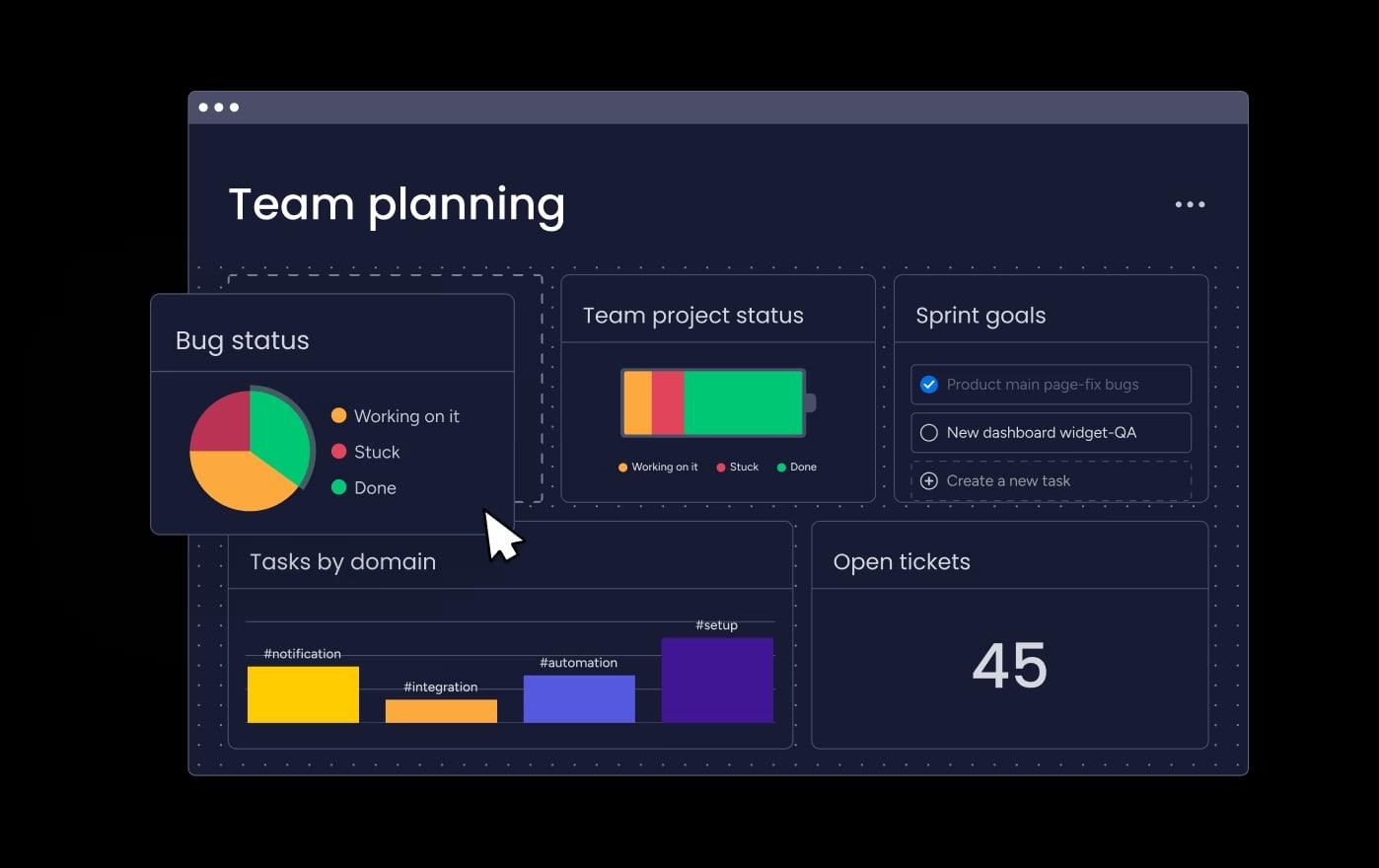
- Multiple views: Utilize different views such as Kanban boards, Gantt charts, and calendars to present POC information in the most suitable format.
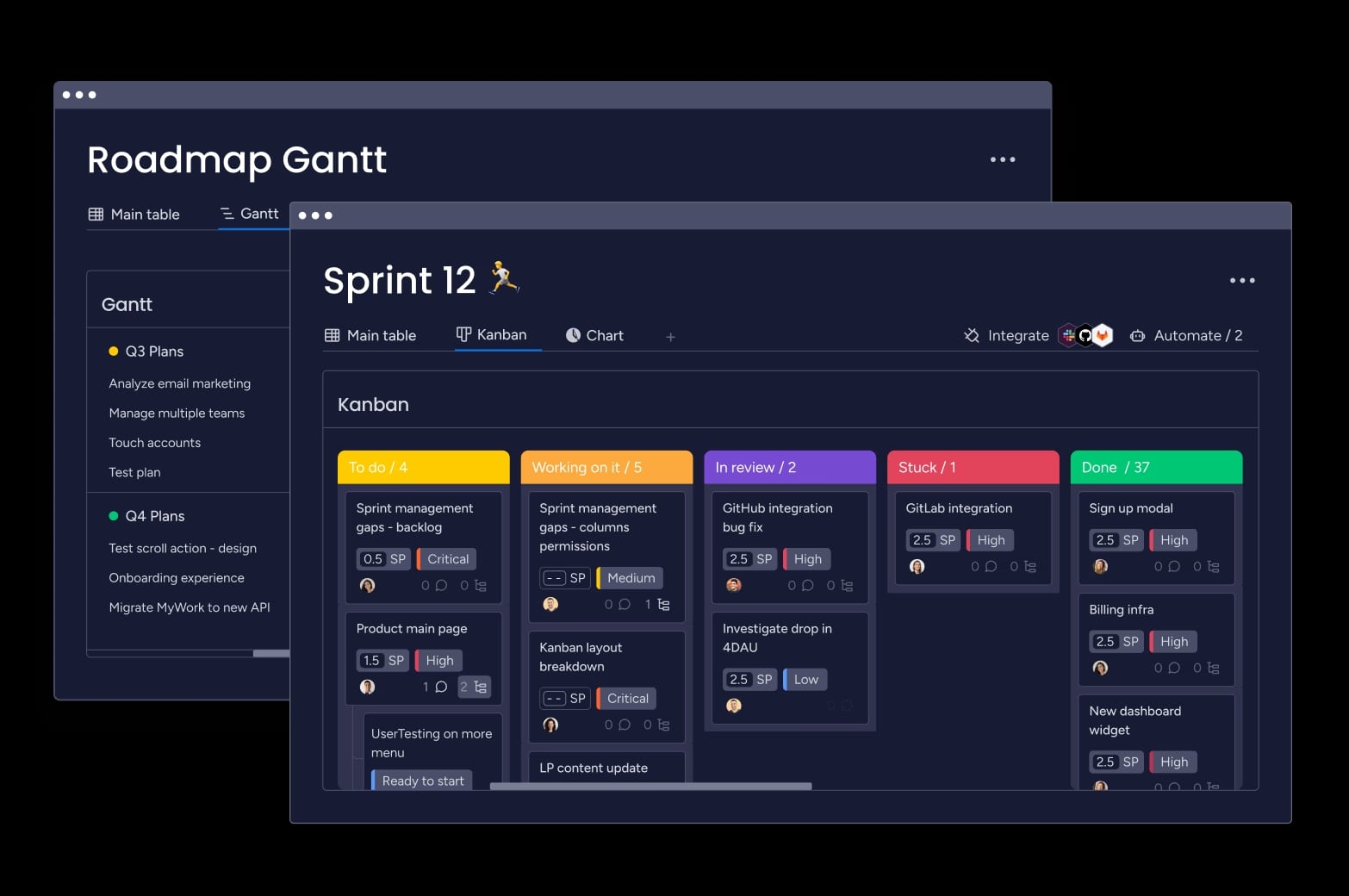
- Collaborative documents: Utilize the Docs feature to create and store POC-related documentation, linking it directly to project boards. Assign tasks, leave comments, share files, and receive instant updates within the platform, facilitating seamless communication among team members.
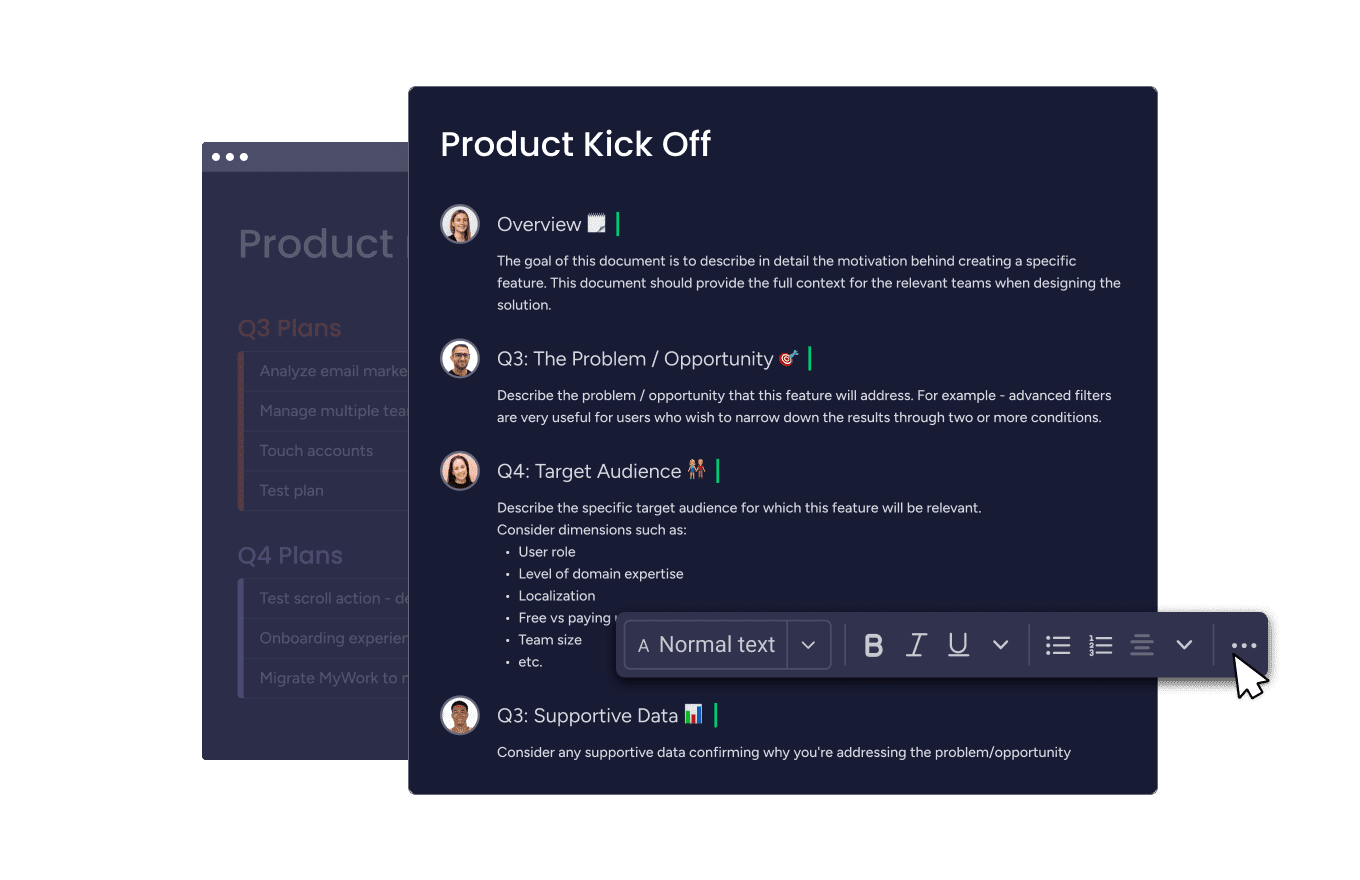
- Integration capabilities: Connect monday dev with over 200 tools, including Slack, Microsoft Teams, and GitHub, to streamline data flow and reporting across different platforms.
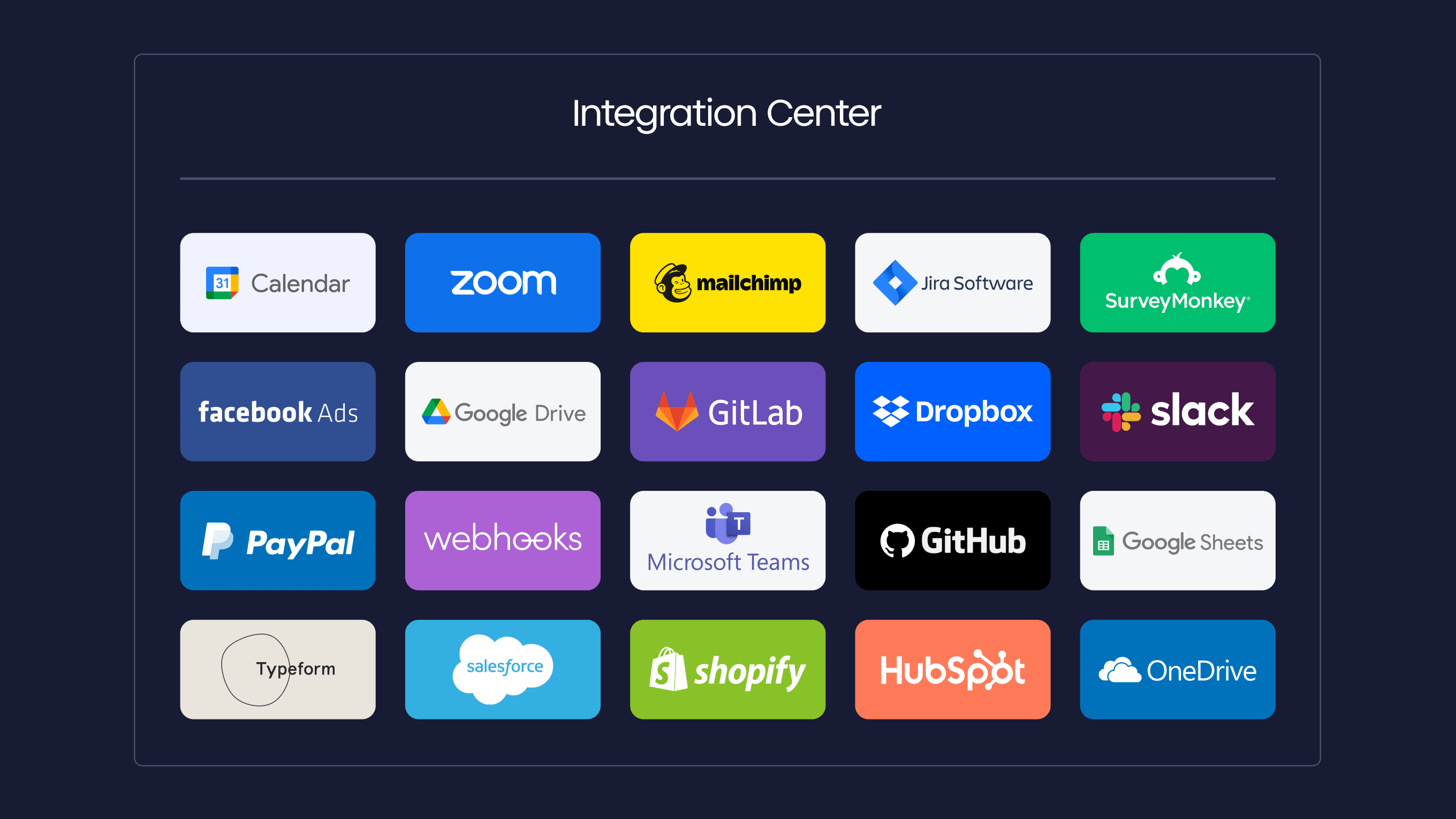
- Automated reporting: Set up automations to generate regular reports or notifications, saving time on repetitive tasks throughout the POC process.
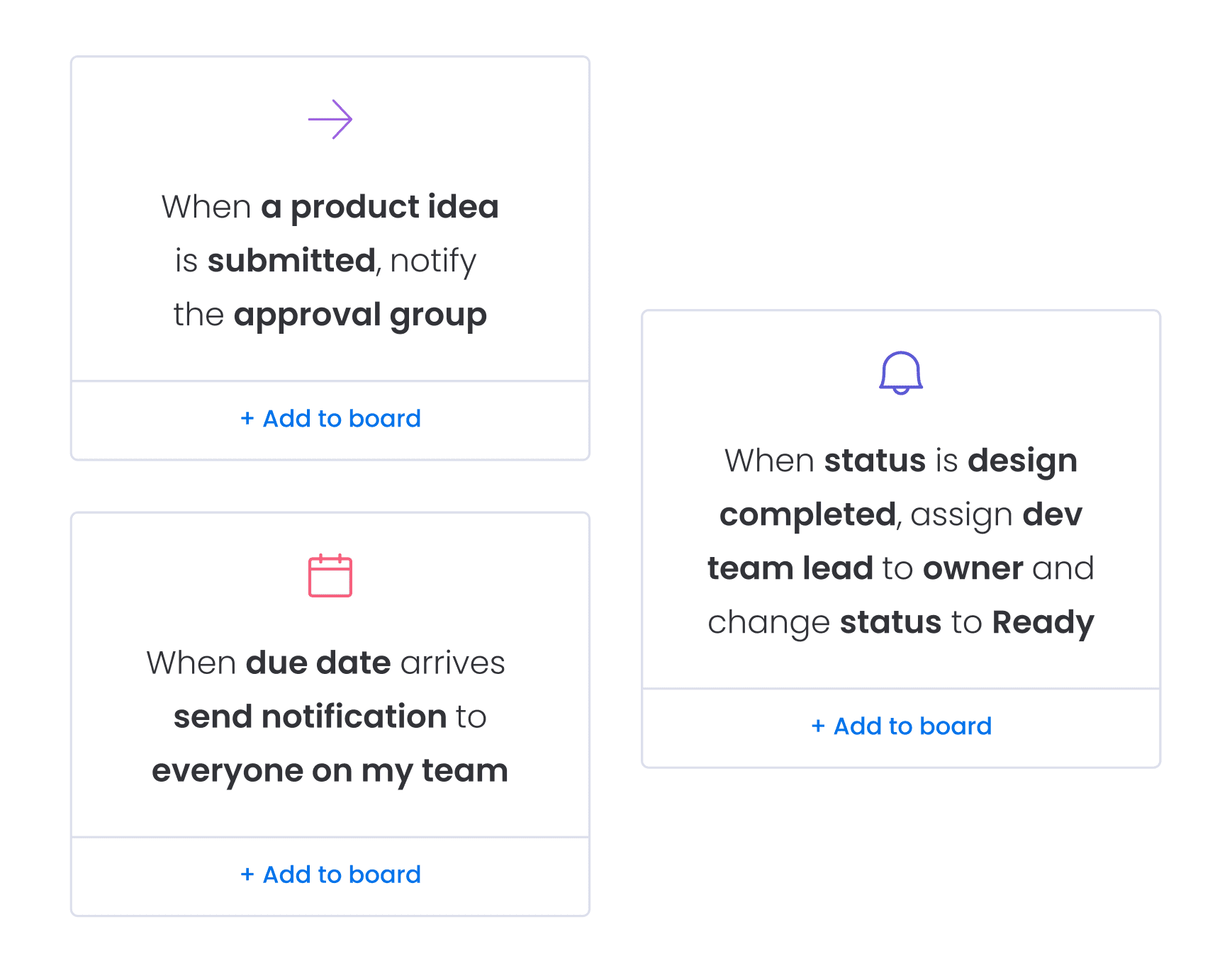
- Summarize product documentation: Use AI to evaluate PRDs and extract key information, so each team member has context.
- Resource management: Track resource utilization and individual team member capacities to provide accurate information on POC resource allocation.
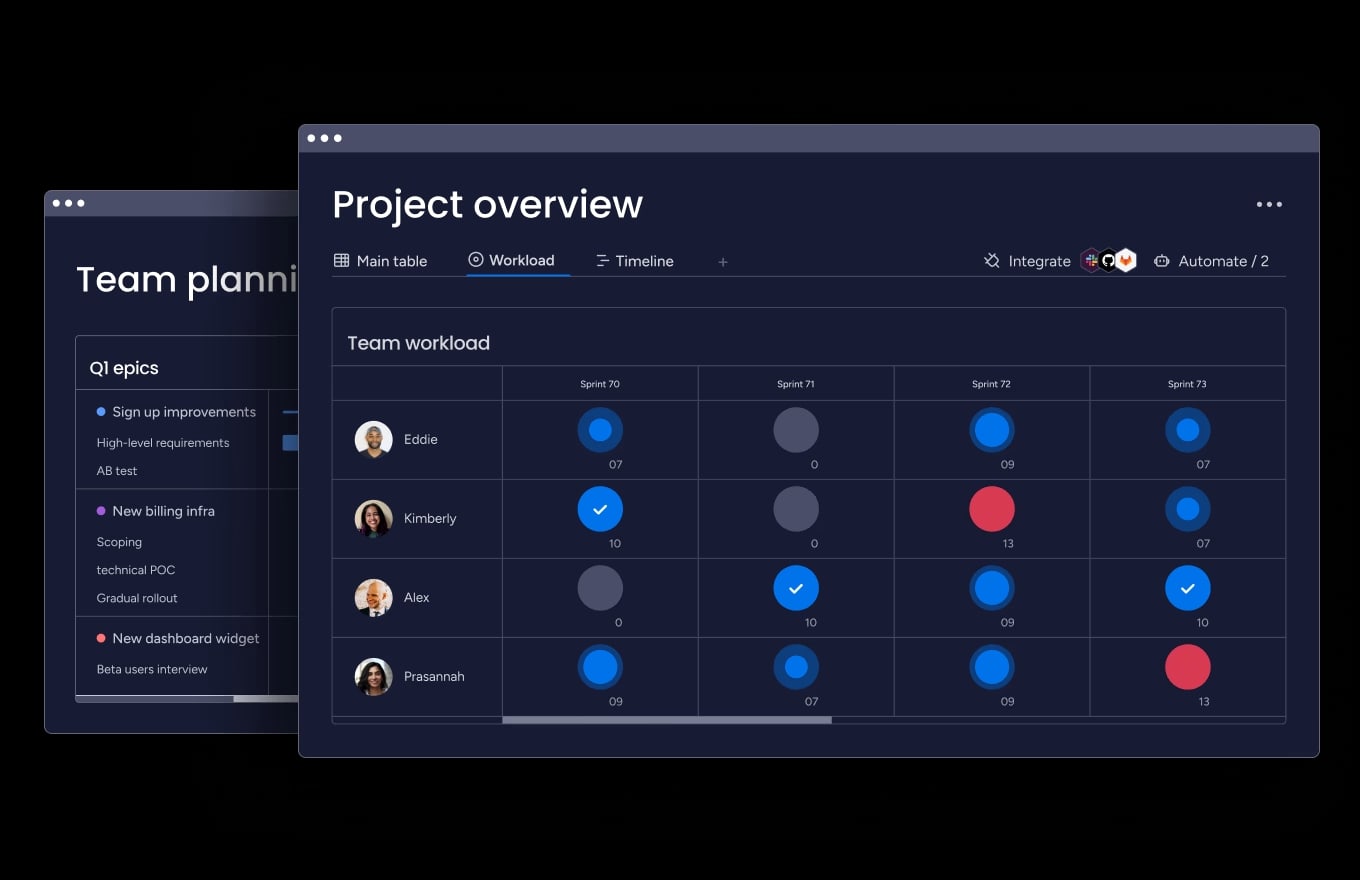
- Data visualization: Use charts and graphs to present POC outcomes clearly, making it easier for stakeholders to understand the results.
- Sharing capabilities: Easily share dashboards and reports with stakeholders using shareable links or email invitations.
By leveraging these features, you can create and communicate comprehensive, visually appealing, and data-driven reports on your proof of concept so stakeholders can make informed decisions on the outcomes.
Try monday devFAQs
What is the role of a proof of concept in project management?
The role of a proof of concept in project management is to validate the feasibility and viability of a new idea or project before committing significant resources. It helps project managers assess potential risks, challenges, and technical issues early in the development process while also demonstrating the project's potential value to stakeholders and decision-makers. By conducting a proof of concept, project teams can make data-driven decisions, optimize resource allocation, and increase the chances of project success.
What is POC in business?
A proof of concept (POC) in business is a strategic tool to test the feasibility and viability of new ideas, products, or technologies before committing significant resources. It helps companies to mitigate risks, validate market potential, and make informed decisions about further development.
What are some challenges when executing a POC in business?
Some key challenges when executing a proof of concept (POC) in business include unclear and measurable objectives, inadequate testing leading to unreliable results, and poor requirement analysis resulting in misaligned goals. Additionally, over-engineering the POC by adding unnecessary complexity, insufficient stakeholder engagement, and improper resource allocation can derail the process, leading to budget overruns or delays.
What should be included in a proof of concept plan?
A proof of concept (POC) plan should include the project's objectives, scope, success criteria, required resources, timeline, and a methodology for testing and evaluation. It should also clearly define the problem or opportunity, outline the concept's potential value, and establish measurable metrics for assessing the POC's effectiveness.
How do you create a proof of concept framework?
To create a proof of concept framework, define clear objectives, outline success criteria, identify necessary resources, and establish a methodology for testing and evaluation. Then, develop a plan that includes a problem statement, project definition, timeline, and steps for prototype development, data collection, and analysis of results against the initial goals.
How long should a proof of concept last?
The duration of a proof of concept (POC) can vary significantly, typically ranging from 6-12 weeks, depending on the complexity of the project and the resources available. Generally, simpler POCs might take a few weeks, while more complex ones can extend up to 3-6 months, as they require more detailed testing and evaluation to validate the feasibility of the concept effectively.
How do you evaluate the results of a POC?
To evaluate the results of a Proof of Concept (POC), compare the outcomes against the predefined success criteria, such as technical performance, user engagement, or cost-effectiveness, to determine if the concept met its objectives. Additionally, analyze data collected during testing, assess any challenges encountered, and consider stakeholder feedback to decide whether the project is viable for further development or implementation.
What’s the difference between a POC and a PoP?
A proof of concept (POC) demonstrates the practical viability of an idea or solution to show that it can work in real-world conditions. In contrast, a proof of principle (PoP) validates the fundamental scientific or technical principles underlying an idea, typically occurring earlier in the development process to reduce scientific and technical risks before moving on to more practical demonstrations.
What’s the difference between a POC and a POV?
A proof of concept (POC) is a practical demonstration of an idea's feasibility to show that it can work in real-world conditions. On the other hand, a point of view (POV) is a perspective or opinion on a particular subject, typically used in business or design contexts to articulate a specific approach or solution to a problem, without necessarily involving a practical demonstration.
Don’t miss more quality content!
